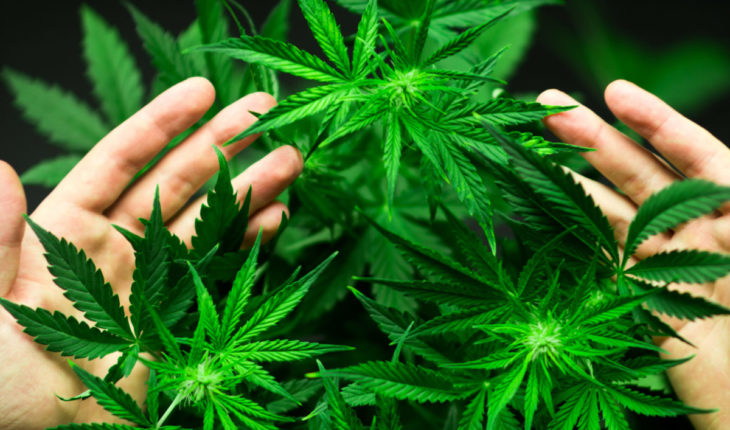Alternative medicine is fast becoming a mainstay and not necessarily the alternative but becoming the real deal. This more especially as regards the treatment of chronic pain and pain generally. Conventional medicine as an option for chronic pain is gradually going out of fashion as patients are seeking solutions elsewhere. Using drugs and surgery have often not yielded the best results. Most pain-relieving medicines are made from opium, which has shown in the past few years could be highly addictive with varying other side effects.
Morphine is the main component of opium used as a pain reliever. Besides heavy dependence on the drug, other side effects include nausea and vomiting, constipation, loss of appetite, difficulty urinating amongst others, which are short term effects. Its usage also portends the possibilities of long term side effects like chronic constipation, weight loss, poor appetite, increased blood sugar, immunodeficiencies, among others. Surgeries haven’t also been above reproach as the pain often tends to recur, making alternative medicine the best option.
Alternative medicine involves the use of natural products and techniques to improve health and well-being. One exciting aspect of alternative medicine is the fact that treatment can be custom made and tailored to address the immediate need of the individual. In the long term, focus on ensuring that the root cause of the illness is treated, thus reducing recurring situations. In this article, we would be highlighting alternative treatment methods that are a fantastic option for pain management.
Acupuncture

Source: Clarity Way
Acupuncture is a traditional Chinese method of reducing pain and balancing body energy. It is the act of inserting needles, pressure, and heat into the body at specific points and varying depths. These needles are inserted at strategic points in the body where nerves, tissues, and muscles can be stimulated. This process triggers pain receptors in the body to douse pain and generally increase blood flow. Beyond pain, it is useful for blood pressure regulation and reduces the chances of stroke as the muscles are well stimulated.
Acupuncture has proven to be a highly effective treatment for chronic pain, especially back pain, neck pain, and osteoarthritis. It drastically reduces episodes of chronic pain, headaches, and migraine. It reduces pain by deactivating the source by regulating endorphin levels and blocks the pain signals coming from the nerves. It has also been useful in treating fibromyalgia.
Yoga

Source: Pixabay
Yoga is a combination of physical, spiritual, and mental practices and activities that has its origin in ancient India. It involves you doing breathing exercises and meditation. It improves happiness and health. It helps to train the mind and build positive energy. Helping to achieve a holistic harmony between the body, mind, and environment. Research shows that chronic pain causes changes in the brain structure that are linked to depression and anxiety. Now practicing yoga has just the direct opposite effect on the brain.
Yoga, being a very physical activity, changes the human perception of pain as it is believed that in practice, you get to master your pain. These mind-body practices have been researched, and the outcome is it reduces pain. Research also shows that yoga improves the gray and white matter in the brain, a reduction of which causes memory impairment, decreased cognitive functioning, and pain perception. Yoga improves gray matter through neurogenesis and white matter via neuroplasticity. The research revealed that changes in gray matter are the most significant psychological factor in chronic pain.
Massage Therapy

Source: Treat Me
That is the scientific and calculative manipulations of soft tissues in the body using techniques such as applying pressure, moving body tissues and muscles, with the aim being to reduce pain as well as stress. It can be done with the hands, fingers, knees, feet, elbow, or a device. Research has shown massage to be useful for low back pain, arthritis, headaches, fibromyalgia, and post-surgery pain. It relieves pain by relaxing, hurting muscles, tendons, and joints. It also blocks pain receptors by thoroughly stimulating nerve fibers.
Research showed that those who actively engaged in massage over four weeks had reduced body pain, anxiety, and improved sleep better than those who didn’t receive massage. Another research also showed that a 60-minute therapeutic massage session thrice a week over a month drastically reduced chronic neck pain.
Cannabis

Source: Patentpool
Cannabis is of immense help and benefits to chronic pain patients. It is no surprise why many states in the U.S. have a functioning medical marijuana program where marijuana is recommended for chronic pain. Cannabis has two main components or cannabinoids, as they are technically known as THC and CBD. These cannabinoids have been researched and discovered to have medicinal properties useful for treating a variety of illnesses such as glaucoma, epilepsy, Crohn’s disease, chronic pain, and many more. Particularly pain resulting from nerve damage and inflammation.
It is important to note that the cannabis plant has different variations known as strains. These strains have different chemical compositions, and there are two main types – Indica and Sativa. They have different CBD and THC content. Terpenes are another vital component. They are a kind of aromatic compound that gives the cannabis and other plants its flavor and aroma. It is crucial to understand terpenes before finding the right strain, and you can learn more about terpenes here.
Terpenes don’t only give the cannabis plant its flavor and aroma but also influences the categorization of cannabis into strains. For instance, Myrcene, the most common and abundant terpene in cannabis, will make a cannabis plant an indica if it exceeds 0.5%. Indicas are usually the best option for chronic pain, precisely neuropathy, joint pain, and spasticity.
